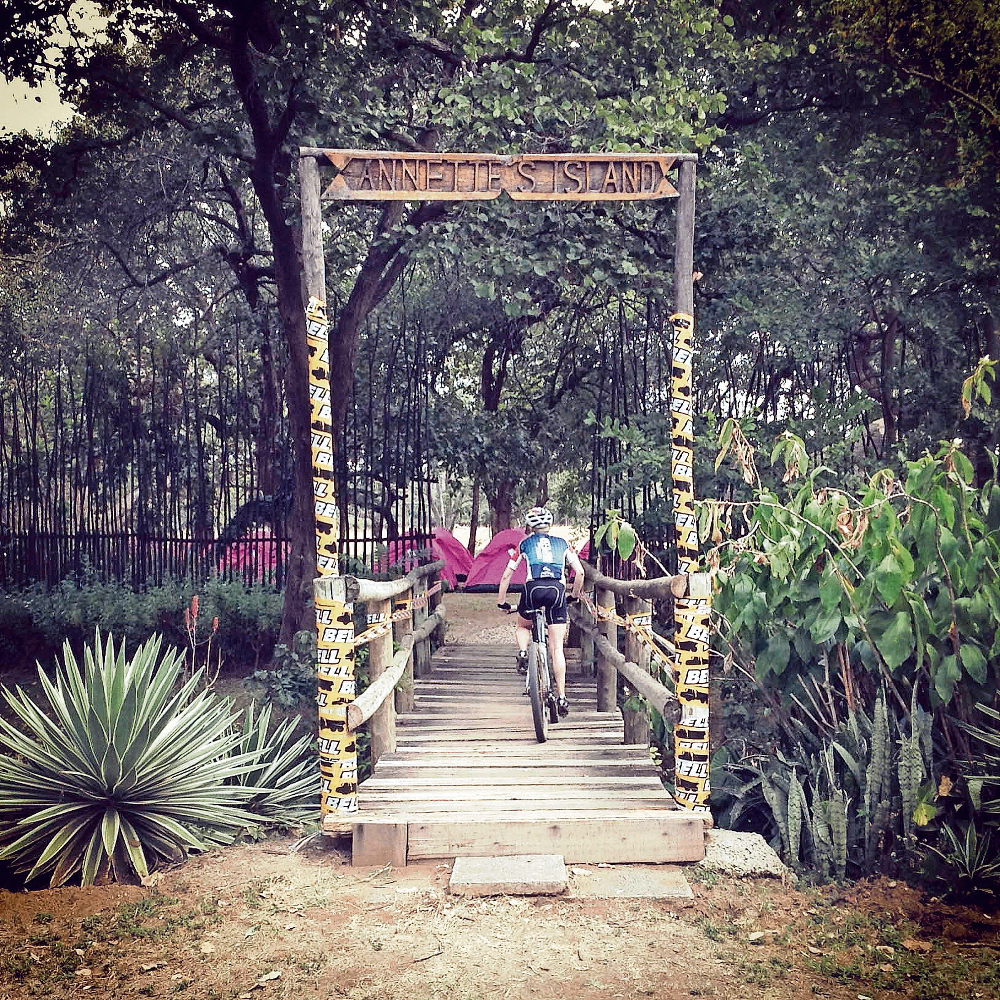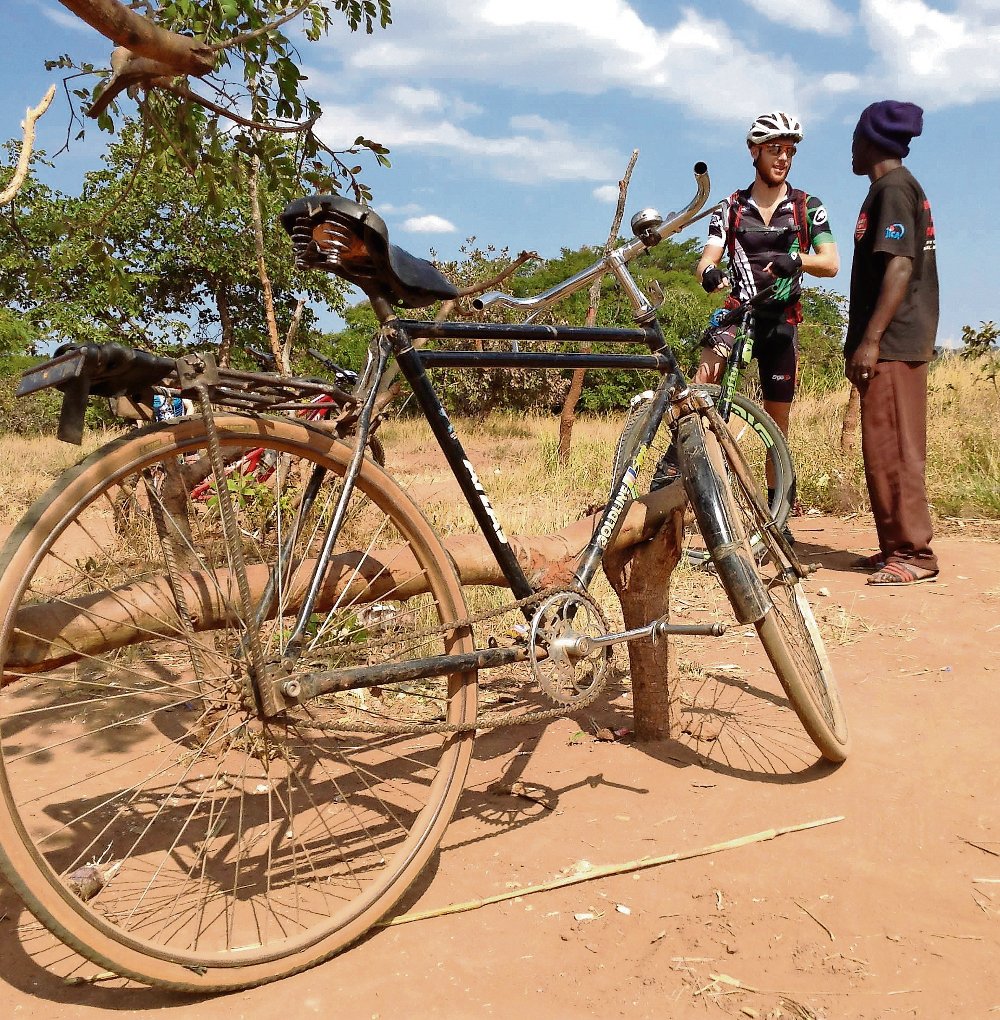Dawn had not quite broken on a mild June morning when Zambian cyclist Obert Chembe woke to a panicked phone call.
The caller was Christiaan Engelbrecht from Lusaka, who was due to start the first stage of a hugely anticipated three-day mountain bike race in less than two hours. The race, named the FNB 1Zambia, was to be ridden by two-cyclist teams, but Engelbrecht found himself that morning without a partner and he was desperate.
He had prepared for months, training, eating the right foods, blowing money on expensive bike parts and plotting carefully with his team- mate, who that Friday morning was laid up with a broken leg, the outcome of a failed training ride three weeks before.
The pair won the race last year and had a title to defend. Although Engelbrecht had lined up a replacement, this arrangement fell through the night before the start because the stand-in was not serious enough.
“At 5.09am, I messaged the race organiser Owen Green and asked if he could organise a partner,” Engelbrecht explained later. “Owen suggested Obert,”
Of course, the 25-year-old Chembe knew all about 1Zambia. He is a cyclist of impressive pedigree, who has trained and raced in South Africa, Switzerland, Italy, Gabon and Rwanda. People described him as Zambia’s most talented road cyclist.
Be that as it may, his mountain bike had been damaged beyond repair almost a year earlier and the entry fee for a stage race in his back yard was too much for him to bear.
But Green agreed that if Chembe could be convinced to ride, the cyclist could borrow Green’s wife’s mountain bike, which the race mechanics had serviced the night before, jus in case.

Grasslands and woodlands
When Engelbrecht rang, Chembe was due to get up soon for work anyway. It was a Friday morning and, as he did every work day, he planned to climb on his bike and ride 34km into Lusaka, where he repairs bikes at the city’s biggest bike shop, the curiously named Tackle and Pet Haven Lifestyle Limited.
Engelbrecht said: “I first called Obert at 5.30am and at 5.50am I got hold of him.”
“I wasn’t even training for mountain bike,” Chembe said. “I am not racing fit, but I said, okay, it’s fine, I can help you.”
Within half an hour, Engelbrecht collected Chembe and by 7am they and 49 other teams were lined up at the start, beneath a towering acacia tree. I was there too.
The night before, I had slept alongside the start line in a small, bright pink tent. The venue was Lilayi Lodge, on the outskirts of Lusaka. It is part of a modest reserve hosting a baby elephant nursery and protecting 650 hectares of beautiful grassland and miombo woodland from the deforestation that is rampant in Zambia’s rural expanses.
As I had dozed off shortly before 9pm, a conversation exploded among the nearby waterhole’s resident frogs: Whirrrrrr, squeeeak, whirrrrrr, dddddrrrrrk, whirrrrrr… Exactly one minute later, the dissonance inexplicably ceased.
As I stumbled to the loo an hour later, I was startled by loud splashing. Evidently a large animal was taking a dip, although I could see nothing.
Even later I woke to a more frightening racket, suggestive of an infant being slowly slaughtered nearby. Bushbabies, I was later informed.
This was the second edition of 1Zambia. Organised by Green and his friends and their families and their friends, it is growing, but still a family affair, unique not only for its night-time ecosystem.
The perfect trail for mountain biking
Each team had downloaded the route on to the GPS bike computers we used to navigate. There were no arrows to mark the way, no warning signs and no marshals to clear the way of cattle and football games.
In contrast to many of South Africa’s carefully marked races, which are spruced up with purpose-built trails, 1Zambia traces a network of narrow, time-worn cattle, goat and pedestrian tracks. They are strangely perfect for mountain biking: fast, unpredictable, rugged, organic.
Days one and two take the teams on roughly 70km-long loops, ending back at Lilayi. Day three is a dramatic 108km beeline from Lilayi, down the steep tracks of the escarpment to the Zambezi River valley floor, where the race ends at Kiambi Lodge on the banks of the mighty river.
Out on the trail that Friday morning, the woodlands gave way to mealie fields, small villages and endless tracks. As I went into battle with the skinny, fast Chembe, who terrorised me on the descents and smashed me on the gruelling climbs, there was nothing to tip me off that he had been called in just an hour earlier.
No matter, because my “race” lasted no more than 15km, the scene of the first big climb. My experience was best explained by a storyteller in the campsite the following night.
He asked me how my ride had gone, and when I explained, he said: “Oh, was that you? Some guy told me he asked the one rider how he was going, and the guy looked at him and vomited.”
Different ways to ride a bike
The same storyteller described how he had ridden past an elderly local woman standing at the side of a difficult climb, who asked him: “So tell me, where exactly are you going?”
“You can imagine how it must look,” he said to me. “You know, 100 guys tearing though the countryside looking knackered, riding back to the same place they started.”

There are many different ways to ride a bike, especially in Zambia.
Two days earlier, while my team mate Donovan le Kok and I had explored the villages and subsistence farmlands outside Lilayi, we passed scores of bicycles: a stream of uniformed girls and boys riding home from school. A teenage boy teetered down a rough track with a queen-sized bed balanced on the baggage rack at the bike’s rear, supported precariously by three much smaller boys running behind.
Opposite a dusty football pitch where throngs of children chased a ball, men gathered outside a small tavern and cheered us on. Nearly a dozen bicycles leaned against the trees and a water pump – their rides to and from their ale. Alongside the pitch stood an old bicycle piled high with firewood.
As we rode past, a small boy on a large, black, single-speed emerged from the football game. Branded “Atlas Goldline”, it had a rattling metal mudguard, a seat that bounced on a makeshift spring and a huge broken bell.
The pedals were also broken, and his bare feet curled around steel spindles that he stood on as he sprinted past me up the hill.
I shifted gears and caught up. He spun faster and pulled away, but eventually, puffing and wheezing, he slowed to a stop and let us ride on, his point well made.
Donovan quipped: “And here I am complaining that my shocks are 2% too hard and my brakes are maybe 40% worn, but … I just can’t ride like this.”
Bright Chintu, another serious 1Zambia contender, explained to me that most Zambian families own more than one bike. Njingas, they call them.
“It’s the cheapest mobility in Africa,” he said.
Then there’s John Stanford. He was 400km north of Lusaka, cycling slowly from London to Cape Town, when he heard about 1Zambia. He had just three days to pedal his 50kg touring bike (baggage and water included) southwards and made it just in time. Although he borrowed a carbon dual-suspension mountain bike for the event, he maintained his relaxed pace and cruised steadfastly every day from start to finish, where he enjoyed a cold ale and told his many tales.
On Sunday, stage three, the air was hot, still and quiet on the Zambezi valley floor. I crouched to photograph one corn cricket devouring the carcass of another in the middle of a sandy track.
With me were the race mechanics, Toni Pedro and Roland Smith from Republic Sport in Durban. They called each other “Bruce” and “Bruce”.
We heard a bicycle approaching. I looked up and saw a black-skinned cyclist, head down, legs pushing at full power. It was Chembe. Fifty metres behind him lagged Engelbrecht, struggling to keep up. They were in third place for the third day running.
The bike Chembe had borrowed, aptly branded “Iron Horse”, was a weighty 15kg and sported small 26-inch wheels. The bike was much too small, sized for a petite woman.
Bruce and Bruce could not believe their eyes.
Said one: “When we got that bike, the bearings were shot, the hubs were loose. They had not been greased in about two or three years.”
When they tried to straighten the brake levers, one of them snapped off. “I doubt if the shocks had ever been set for racing.”
“That’s where you see the difference between talent and money,” added Bruce.
Said Bruce: “When I saw it on the bike rack after day one, I thought: ‘Why’s that bike here? He can’t be riding this. He’s down on wheel size. He’s down on weight. He’s down on everything. That’s just talent that he’s pushing around’.”
What we didn’t see were the blood stains on Chembe’s cycling kit. He had crashed on a treacherous downhill 10km earlier, badly injuring his ribs, an arm and a leg.
Once he caught up, Engelbrecht remembered: “He said to me, Christiaan, I’m dead bru. And then at the next hill, he started ramping up the pace again. He left me behind.”
I found Chembe at the medic’s tent at the finish line. He was too weak to speak but explained later: “I was just scared of the pain, that if it gets too much, then I won’t want to go on. I just wanted to get to the doctor. So I said to Christiaan, I wanted just to go.”
There are many ways to ride a bike, and Chembe’s way, it was obvious to me, was tough and very fast.
My interviews done, my race long ago abandoned, I retired to a floating jetty as the Zambezi swelled below me. Something snorted loudly in the water nearby. I moved away.
We had wanted to win, but instead cycled slowly, and sometimes uncomfortably, through villages, across plateaus and down to an African torrent that I might otherwise never have seen.
If that was the only way I got to ride a bike, I’d still be happy.
Craig McKune’s travel expenses and race entry fee were covered by the race organisers